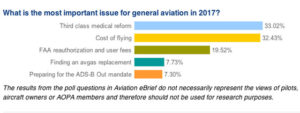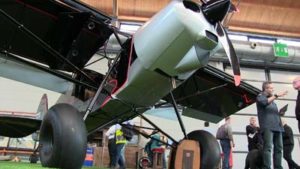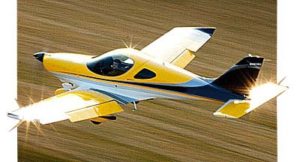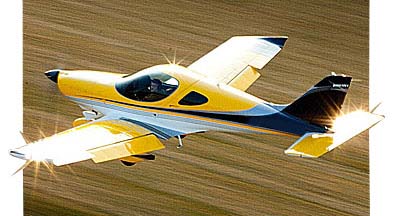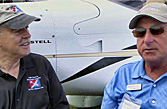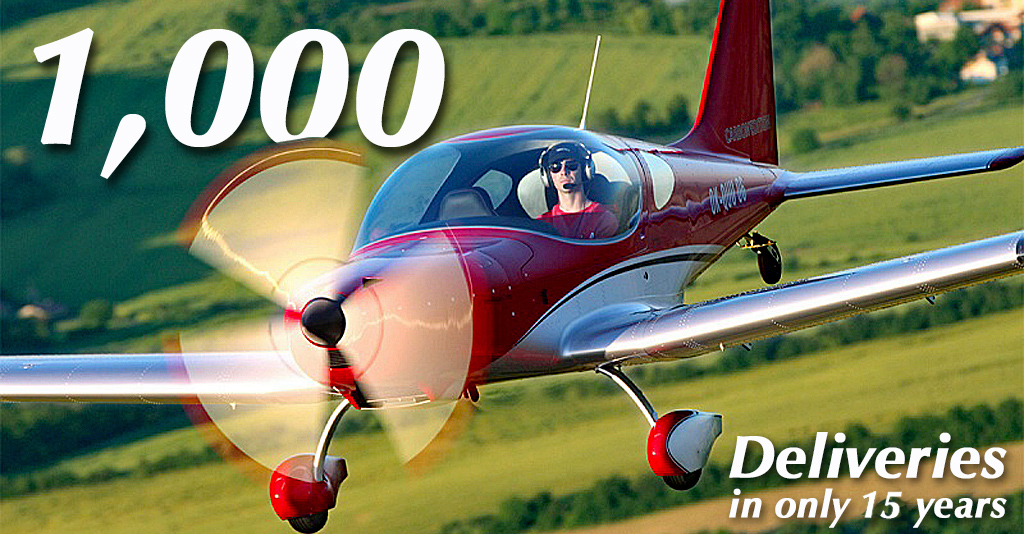
In the airplane-manufacturing enterprise, very few companies have exceeded four figures of aircraft deliveries. The newest producer to achieve this feat did so in only 15 years. BRM Aero announced, “Last year (2024) was a remarkable year for Bristell Aircraft. Reaching our 1,000th aircraft milestone, securing vital certifications, and maintaining strong production numbers have demonstrated our commitment to excellence in aviation.” I wrote about BRM hitting 300 deliveries in 2017 (eight years after starting up). Now, seven years later BRM has reached their 1,000th aircraft delivered. That’s a second half average of 100 units per year, a production rate any company would be proud to have — even for businesses operating many more years. In 2024 alone, 112 Bristell models were delivered showing the current pace the Czech company is achieving. Part of the reason for this success is a surprising diversity of aircraft models based on the original.


 BRM Aero announced, "Last year (2024) was a remarkable year for Bristell Aircraft. Reaching our 1,000th aircraft milestone, securing vital certifications, and maintaining strong production numbers have demonstrated our commitment to excellence in aviation."
BRM Aero announced, "Last year (2024) was a remarkable year for Bristell Aircraft. Reaching our 1,000th aircraft milestone, securing vital certifications, and maintaining strong production numbers have demonstrated our commitment to excellence in aviation."
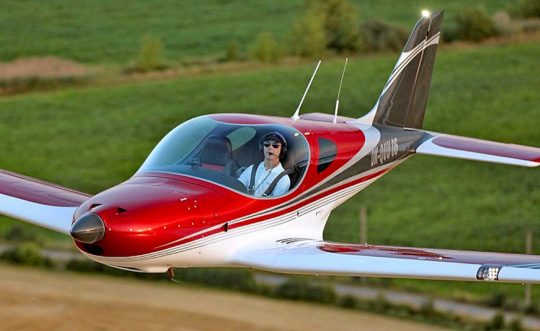 I wrote about BRM hitting
I wrote about BRM hitting 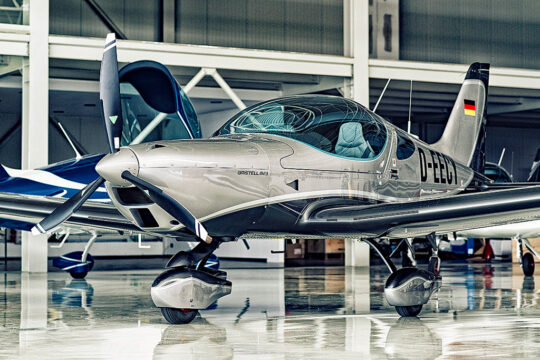 BRM AERO MODEL LIST
BRM AERO MODEL LIST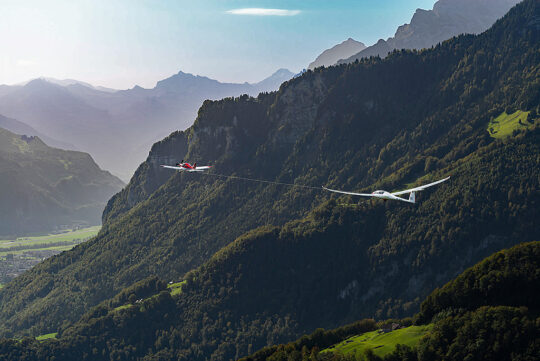 "Our versatile aircraft offers multiple capabilities that cater to different flying needs," BRM Aero elaborated. "During the certification process for the tug model, we extensively tested the aircraft in challenging mountain conditions, where it particularly shone in glider towing operations, easily handling gliders up to 850 kilograms (about 1,875 pounds)." Towing more than it weighs is a notable point.
"BRM Aero is a family company primarily focusing on individual custom-built airplanes," explained founder (and father) Milan Bříštěla. "[We are] able to carry out all kinds of modifications according to customer requirements. Each customer can therefore get a unique airplane that best suits their needs."
"Our versatile aircraft offers multiple capabilities that cater to different flying needs," BRM Aero elaborated. "During the certification process for the tug model, we extensively tested the aircraft in challenging mountain conditions, where it particularly shone in glider towing operations, easily handling gliders up to 850 kilograms (about 1,875 pounds)." Towing more than it weighs is a notable point.
"BRM Aero is a family company primarily focusing on individual custom-built airplanes," explained founder (and father) Milan Bříštěla. "[We are] able to carry out all kinds of modifications according to customer requirements. Each customer can therefore get a unique airplane that best suits their needs."
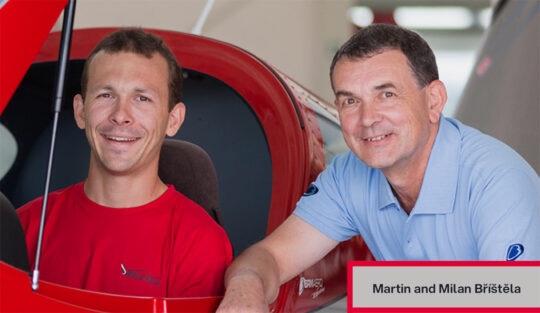 The father and son duo at the helm of BRM Aero have obviously been mighty busy building a company from scratch and rising to the upper ranks in a remarkably short time. Milan founded BRM AERO s.r.o. in 2009, just 15 years ago. His son Martin was in at the start and has now risen to become CEO of the company. Today, the business employs 135 people.
The father and son duo at the helm of BRM Aero have obviously been mighty busy building a company from scratch and rising to the upper ranks in a remarkably short time. Milan founded BRM AERO s.r.o. in 2009, just 15 years ago. His son Martin was in at the start and has now risen to become CEO of the company. Today, the business employs 135 people.
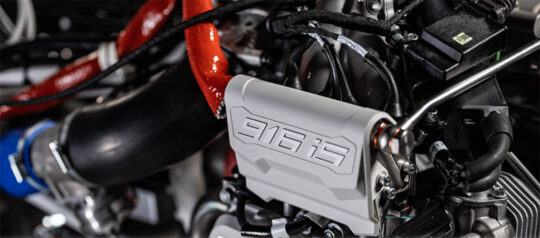 In addition to supporting the popular and potent 916iS powerplant, BRM Aero has another 160-horsepower trick up its sleeve, at least for those with a thicker wallet.
'We are proud to announce [that] we successfully achieved the first 300 flight hours with a new powerplant from Turbotech. Our Bristell Turbine will be available as an Ultralight (UL) with a turbine engine in Europe, or as a Mosaic plane in the USA. Key features include an exceptionally smooth sound, no vibration, and turbine power characteristics of up to 160 horsepower," stated Martin.
In addition to supporting the popular and potent 916iS powerplant, BRM Aero has another 160-horsepower trick up its sleeve, at least for those with a thicker wallet.
'We are proud to announce [that] we successfully achieved the first 300 flight hours with a new powerplant from Turbotech. Our Bristell Turbine will be available as an Ultralight (UL) with a turbine engine in Europe, or as a Mosaic plane in the USA. Key features include an exceptionally smooth sound, no vibration, and turbine power characteristics of up to 160 horsepower," stated Martin.
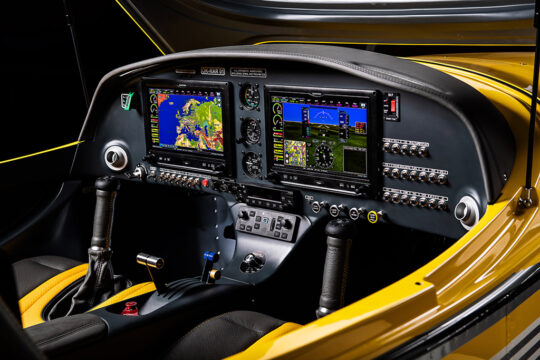 Read more
Read more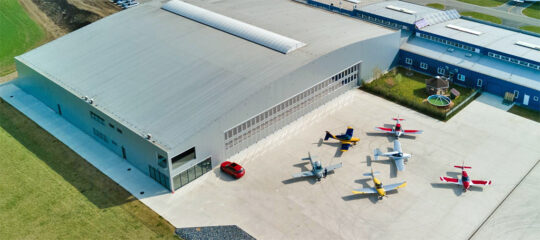 I can only wonder what BRM Aero might achieve in 2025 and beyond but I'm willing to bet their production and delivery numbers keep rising.
I can only wonder what BRM Aero might achieve in 2025 and beyond but I'm willing to bet their production and delivery numbers keep rising.
 https://youtu.be/Rr_4BTsLnxY?si=UH9G9atHSCJtBZ9A
https://youtu.be/Rr_4BTsLnxY?si=UH9G9atHSCJtBZ9A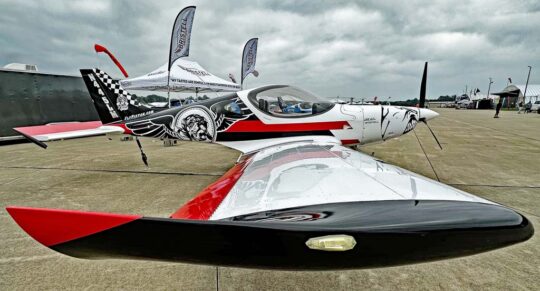 In this article, I will give you a glimpse of what you can see if you can attend on Friday and Saturday. For those that cannot come, this will provide some taste of what happens in Mount Vernon, Illinois in early September. Hopefully, you can come in 2024.
Every image you see below shows that vendors did not just bring one airplane to test the market. In every case, these companies brought two, three, or even four aircraft to show. That's very rare even at AirVenture or Sun 'n Fun.
In this article, I will give you a glimpse of what you can see if you can attend on Friday and Saturday. For those that cannot come, this will provide some taste of what happens in Mount Vernon, Illinois in early September. Hopefully, you can come in 2024.
Every image you see below shows that vendors did not just bring one airplane to test the market. In every case, these companies brought two, three, or even four aircraft to show. That's very rare even at AirVenture or Sun 'n Fun.
 What this illustrates is that the Midwest LSA Expo (about an hour's drive east of St. Louis) has become a standard bearer in the aviation calendar. Indeed, this is Midwest's 15th event, tying the longest-running prior such show, which was the Sebring Sport Aviation Expo. After beginning these LSA-focused shows, Sebring concluded its 15-year run in 2019.
Congratulations to Chris Collins and his entire team of orange-shirted volunteers!
What this illustrates is that the Midwest LSA Expo (about an hour's drive east of St. Louis) has become a standard bearer in the aviation calendar. Indeed, this is Midwest's 15th event, tying the longest-running prior such show, which was the Sebring Sport Aviation Expo. After beginning these LSA-focused shows, Sebring concluded its 15-year run in 2019.
Congratulations to Chris Collins and his entire team of orange-shirted volunteers!
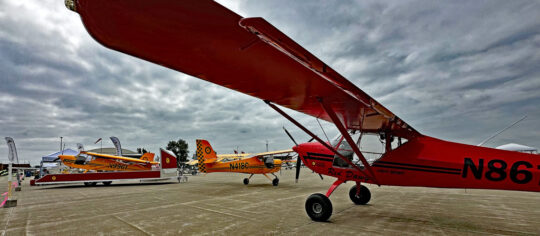 Rob Rollison, the longtime importer of this very successful brand of modestly-priced LSA, has long maintained a very steady rate of business because his supplier overseas in Europe has maintained an prudent approach to business. This has helped that manufacturer remain very stable but it also means delivery times now reach about one year. Rob indicated most customers are willing to wait. It was good to see him back in Mt. Vernon with his handsome airplanes and new trailer.
For More Info —
Rob Rollison, the longtime importer of this very successful brand of modestly-priced LSA, has long maintained a very steady rate of business because his supplier overseas in Europe has maintained an prudent approach to business. This has helped that manufacturer remain very stable but it also means delivery times now reach about one year. Rob indicated most customers are willing to wait. It was good to see him back in Mt. Vernon with his handsome airplanes and new trailer.
For More Info — 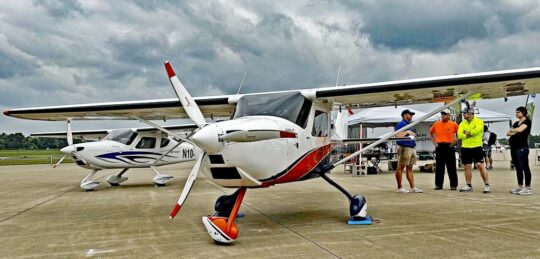 In some ways, the Texas company, which is directly associated with the Brazilian organization, is ahead of the game because Brazil's ANAC has already created a very Mosaic-like regulation with minor differences. Approving that aircraft in their home country should make for a much easier entry to the U.S. market and this Hondo, Texas organization is ready to roll.
For More Info —
In some ways, the Texas company, which is directly associated with the Brazilian organization, is ahead of the game because Brazil's ANAC has already created a very Mosaic-like regulation with minor differences. Approving that aircraft in their home country should make for a much easier entry to the U.S. market and this Hondo, Texas organization is ready to roll.
For More Info — 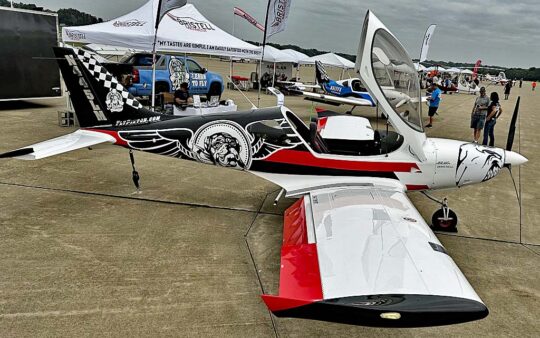 Joe Ord's Piston Aviation operates at Creve Coeur airport in the St. Louis area. They offer a wide range of flight instruction and list their prices right on their home page. You can tell by the nearby image that this company has a sense of style and they had handsome, custom-painted aircraft on display. Again you see the commitment people make to the Midwest LSA Expo if Piston will bring aircraft that could be in flight training to display for you at the show.
For More Info —
Joe Ord's Piston Aviation operates at Creve Coeur airport in the St. Louis area. They offer a wide range of flight instruction and list their prices right on their home page. You can tell by the nearby image that this company has a sense of style and they had handsome, custom-painted aircraft on display. Again you see the commitment people make to the Midwest LSA Expo if Piston will bring aircraft that could be in flight training to display for you at the show.
For More Info — 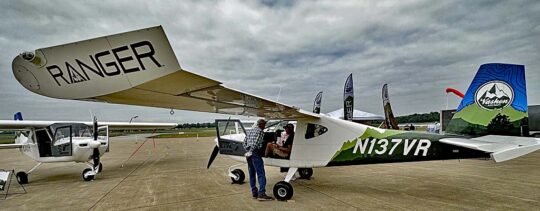 While Vashon's prices have risen slightly over the last couple years – along with virtually everything else you buy — they are still affordable to a wide range of pilots and have particular appeal to some by virtue of their use of a Continental O-200 powerplant. Lots of pilots and mechanics are familiar with that engine and, combined with a new and spacious airframe, the company is finding customers. Clearly, they find some of them right here in Mt. Vernon, Illinois.
For More Info —
While Vashon's prices have risen slightly over the last couple years – along with virtually everything else you buy — they are still affordable to a wide range of pilots and have particular appeal to some by virtue of their use of a Continental O-200 powerplant. Lots of pilots and mechanics are familiar with that engine and, combined with a new and spacious airframe, the company is finding customers. Clearly, they find some of them right here in Mt. Vernon, Illinois.
For More Info — 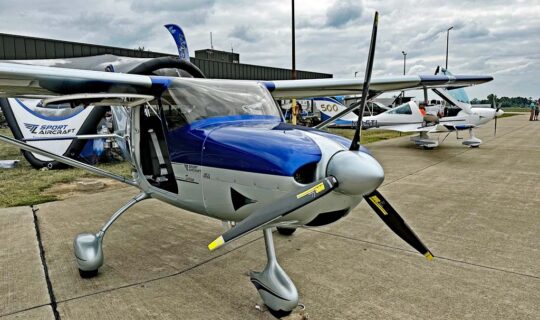 However, Trey is also nicely positioned for Mosaic with his other two aircraft that did not travel to Mt. Vernon. One is the tandem-seating Stream, which I flew with him after Sun 'n Fun 2022. That was a fine experience in a beautiful-flying aircraft. I look forward later this year to a flight in their side-by-side Mosaic-ready entry called Sparker that is the highest performing of their line. Of course, prices follow capability, so the Sirius or Sting may be the more affordable buy, but this company has got choices for you.
For More Info —
However, Trey is also nicely positioned for Mosaic with his other two aircraft that did not travel to Mt. Vernon. One is the tandem-seating Stream, which I flew with him after Sun 'n Fun 2022. That was a fine experience in a beautiful-flying aircraft. I look forward later this year to a flight in their side-by-side Mosaic-ready entry called Sparker that is the highest performing of their line. Of course, prices follow capability, so the Sirius or Sting may be the more affordable buy, but this company has got choices for you.
For More Info — 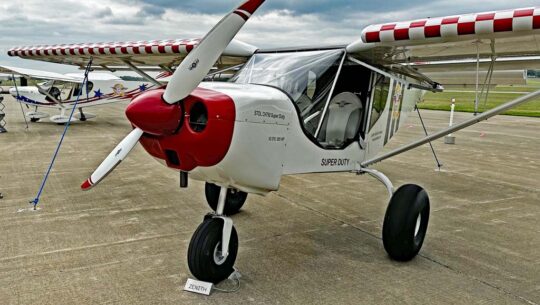 The Mexico, Missouri based kit producer also hosts one of the largest events of its kind in the country, in fact, drawing even more people to it than the Midwest LSA Expo. Now in its 32nd year "Homecoming" is a must-go for any Zenith enthusiast. I've never been able to make it because it occurs right after the Midwest event but I hope many of you can and will attend. You can learn a lot at their event plus enjoy the camaraderie of others with similar interests.
For More Info —
The Mexico, Missouri based kit producer also hosts one of the largest events of its kind in the country, in fact, drawing even more people to it than the Midwest LSA Expo. Now in its 32nd year "Homecoming" is a must-go for any Zenith enthusiast. I've never been able to make it because it occurs right after the Midwest event but I hope many of you can and will attend. You can learn a lot at their event plus enjoy the camaraderie of others with similar interests.
For More Info — 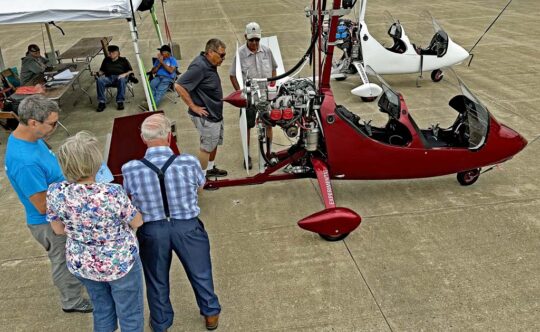 A couple years ago my wife and I each took a flight with Greg and had a marvelous experience. I'm not qualified to fly gyroplanes solo, but I have learned from some experiences and I see the magic that so many enjoy. Greg was one of the original people to fight for 10 years asking FAA to finally allow fully-built gyroplanes. They wore him out without saying yes, but when Roy Beisswenger and I started our advocacy work, we took up the case again. Between his efforts and ours, I'm pleased that we will finally have factory-built gyros available for those enthusiasts.
For More Info —
A couple years ago my wife and I each took a flight with Greg and had a marvelous experience. I'm not qualified to fly gyroplanes solo, but I have learned from some experiences and I see the magic that so many enjoy. Greg was one of the original people to fight for 10 years asking FAA to finally allow fully-built gyroplanes. They wore him out without saying yes, but when Roy Beisswenger and I started our advocacy work, we took up the case again. Between his efforts and ours, I'm pleased that we will finally have factory-built gyros available for those enthusiasts.
For More Info — 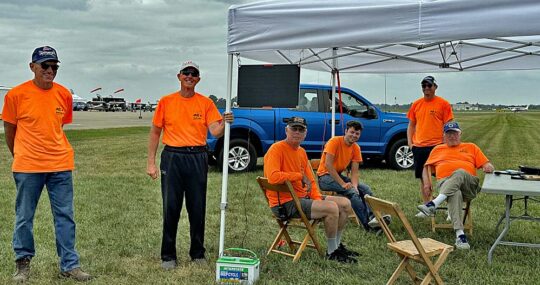
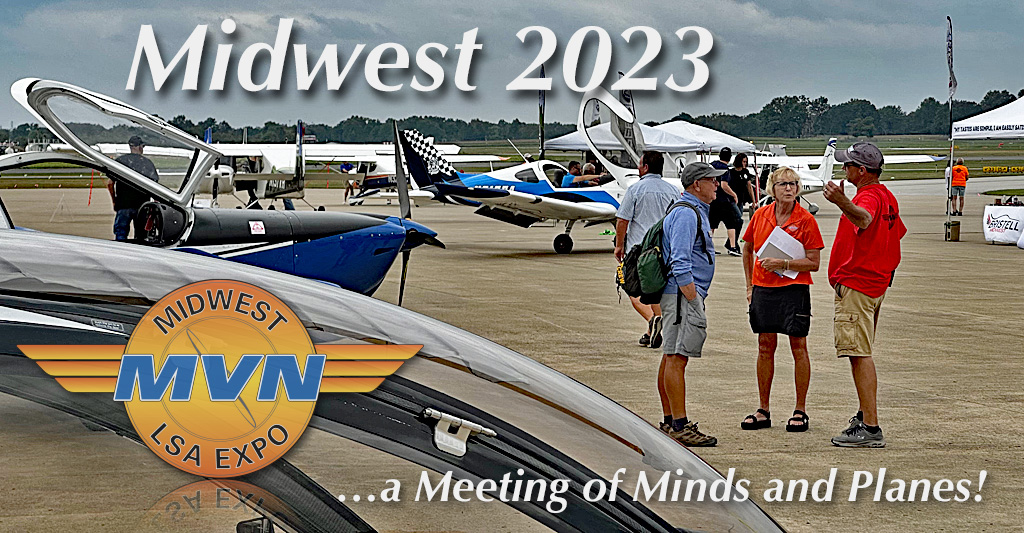
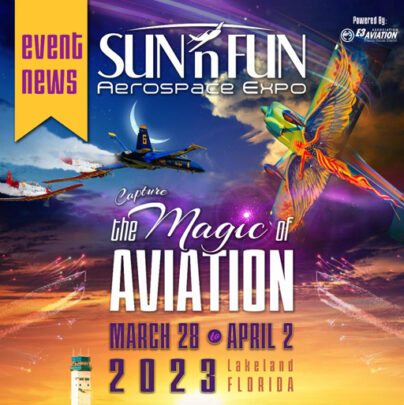 With a delicious 10-day spacing between them — time to rest up a bit after a vigorous week — later in April comes
With a delicious 10-day spacing between them — time to rest up a bit after a vigorous week — later in April comes 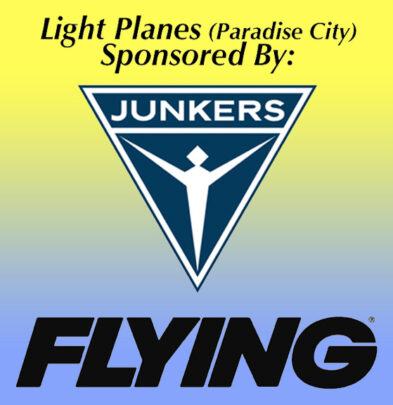 Organizers of the 49th event announced major plans for this popular airshow that kicks off the recreational flying season. My focus is on LSA, Sport Pilot kits, and ultralights. At Sun 'n Fun, that means Paradise City, where big things are happening. You would not be wrong if you scanned this article and saw increased interest in this part of the overall Sun 'n Fun grounds.
Organizers of the 49th event announced major plans for this popular airshow that kicks off the recreational flying season. My focus is on LSA, Sport Pilot kits, and ultralights. At Sun 'n Fun, that means Paradise City, where big things are happening. You would not be wrong if you scanned this article and saw increased interest in this part of the overall Sun 'n Fun grounds.
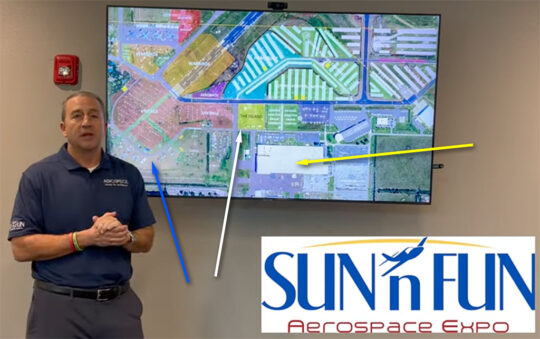
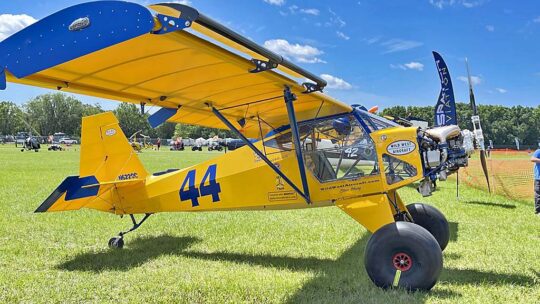
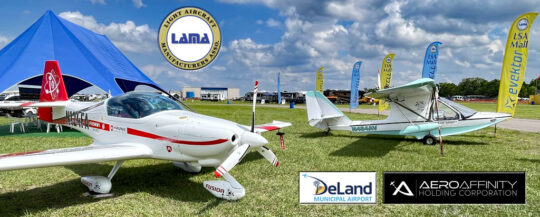 Perhaps it is the potent combination of new leadership and bubbling pilot energy. Perhaps new attention is related to the coming Mosaic regulation. No matter, the area known to many readers as Paradise City or the Ultralight Area — or Light Planes, as Sun 'n Fun now labels it — appears newly energized for 2023. This follows a solid year in 2022 when the overall market sector I follow was
Perhaps it is the potent combination of new leadership and bubbling pilot energy. Perhaps new attention is related to the coming Mosaic regulation. No matter, the area known to many readers as Paradise City or the Ultralight Area — or Light Planes, as Sun 'n Fun now labels it — appears newly energized for 2023. This follows a solid year in 2022 when the overall market sector I follow was 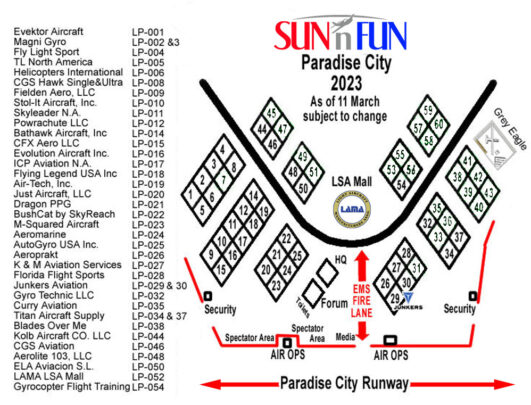 The other sponsor is a new aircraft manufacturer,
The other sponsor is a new aircraft manufacturer, 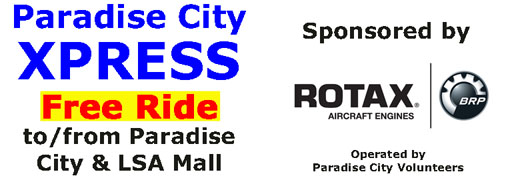 Rotax Aircraft Engines
Rotax Aircraft Engines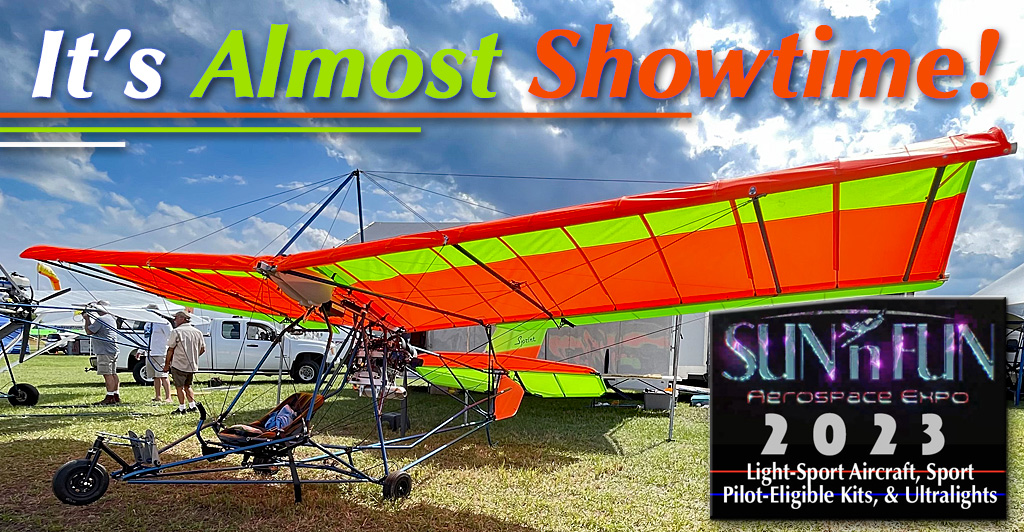
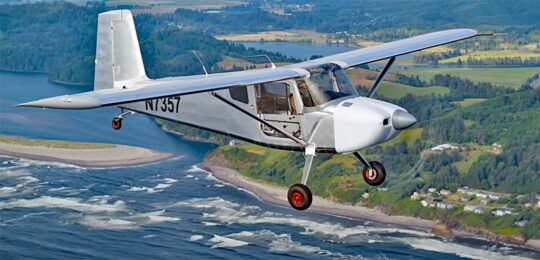 Naturally, Van's isn't the only company aware of what FAA is planning. Any other company or individual who participates on the ASTM committee can know most of the same information. Indeed, this is where I get most of my knowledge about Mosaic as
Naturally, Van's isn't the only company aware of what FAA is planning. Any other company or individual who participates on the ASTM committee can know most of the same information. Indeed, this is where I get most of my knowledge about Mosaic as 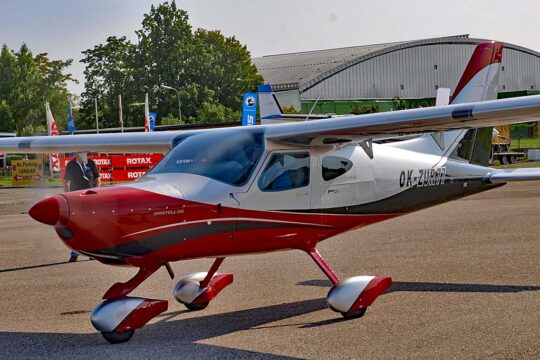
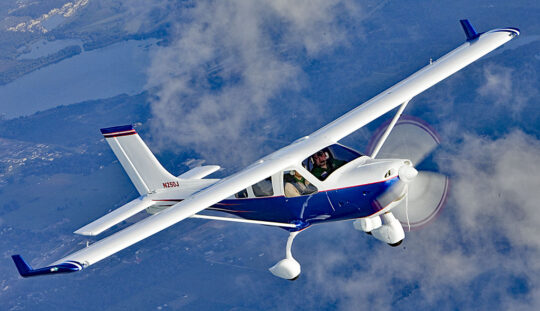 Jabiru
Jabiru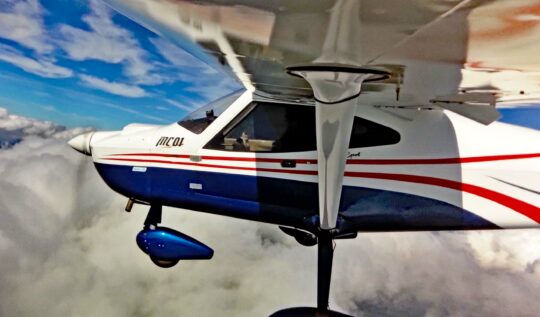 Montaer
Montaer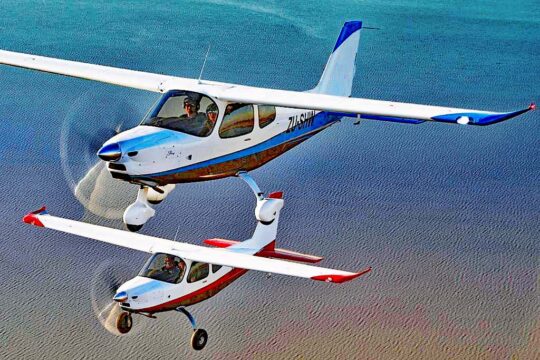 The Airplane Factory
The Airplane Factory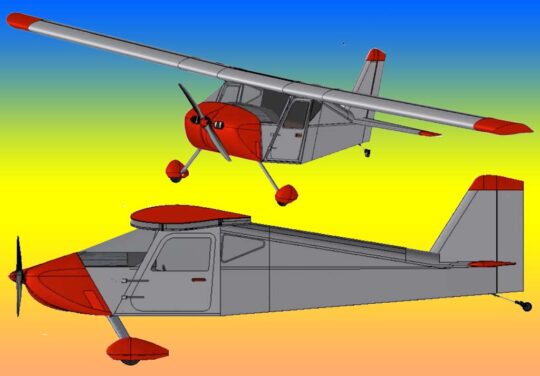
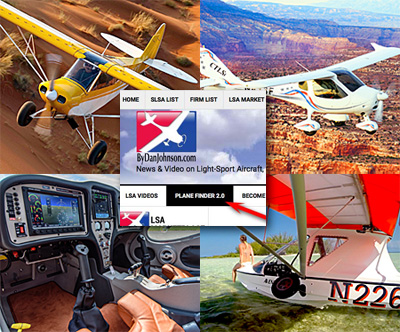 More Available
More Available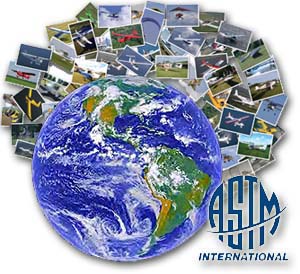 *
*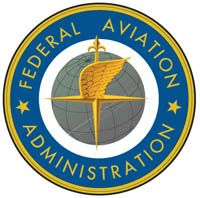 For FAA, this is somewhat new ground. It's unusual for the agency to release this much information about a regulation before they issue it. These things change internally as different FAA departments weigh in, so they usually keep their cards close to the chest until the NPRM (Notice of Proposed Rule Making) is near final form. All this relates only to the airframe.
A different FAA group handles pilot privileges and who gets to fly what size aircraft with how many people on board. They are much less involved with ASTM committee work. That is why we have much less information about what the agency plans regarding pilot certification or flight operations.
For FAA, this is somewhat new ground. It's unusual for the agency to release this much information about a regulation before they issue it. These things change internally as different FAA departments weigh in, so they usually keep their cards close to the chest until the NPRM (Notice of Proposed Rule Making) is near final form. All this relates only to the airframe.
A different FAA group handles pilot privileges and who gets to fly what size aircraft with how many people on board. They are much less involved with ASTM committee work. That is why we have much less information about what the agency plans regarding pilot certification or flight operations.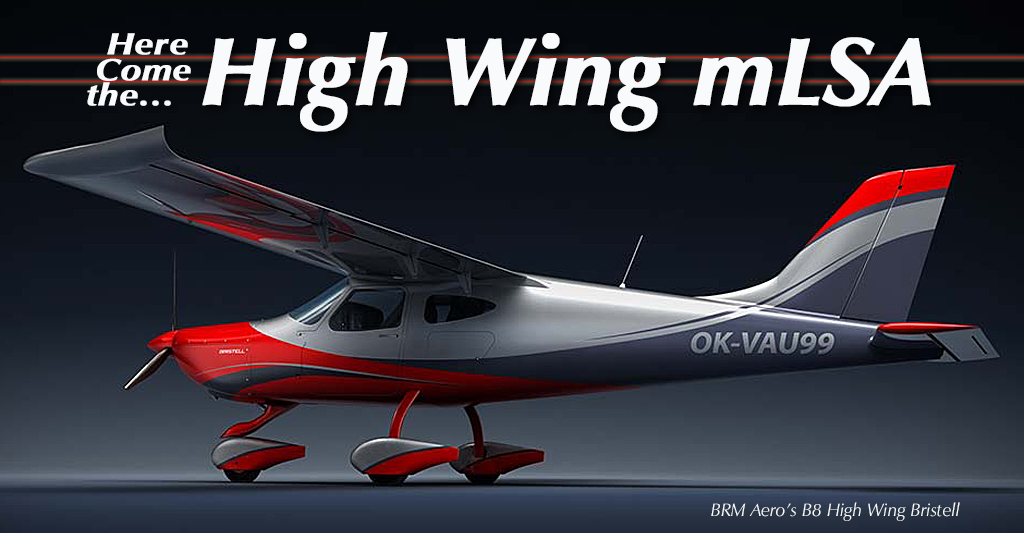
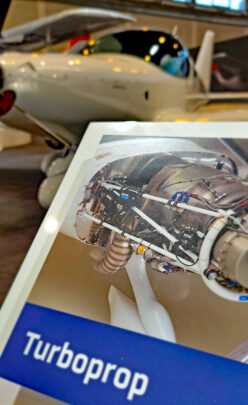 OK, I know turbines are not allowed on present-day LSA. Could that be changing as Mosaic slowly works its way through the FAA? We won't know until FAA releases their NPRM at this year's Oshkosh (I predict). However, some language provided by the agency to guide ASTM standards writers has suggested that the ban on turbines might not last.
OK, I know turbines are not allowed on present-day LSA. Could that be changing as Mosaic slowly works its way through the FAA? We won't know until FAA releases their NPRM at this year's Oshkosh (I predict). However, some language provided by the agency to guide ASTM standards writers has suggested that the ban on turbines might not last.
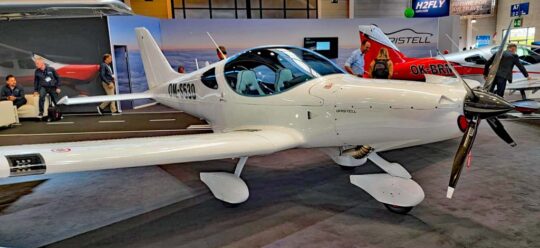 A irony to this possibility is that turbines were the specific reason why electric wasn't permitted. Uh… what?! Yep, in the effort to prevent turbines, FAA rule writers specified reciprocating engines only. That kept out turbines, alright, but it also scratched electric propulsion. Back in the early 2000s, government authorities weren't pushing electric vehicles so rule writers didn't feel the political pressure they do now.
Of at least three companies displaying turbine engines (all use the same supplier; see below),
A irony to this possibility is that turbines were the specific reason why electric wasn't permitted. Uh… what?! Yep, in the effort to prevent turbines, FAA rule writers specified reciprocating engines only. That kept out turbines, alright, but it also scratched electric propulsion. Back in the early 2000s, government authorities weren't pushing electric vehicles so rule writers didn't feel the political pressure they do now.
Of at least three companies displaying turbine engines (all use the same supplier; see below), 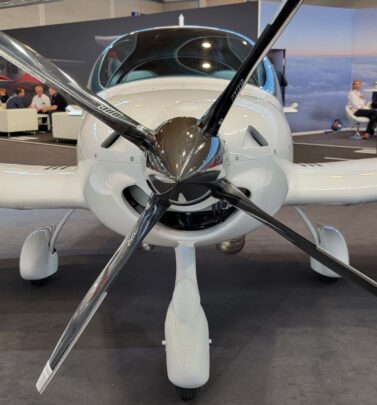 "
"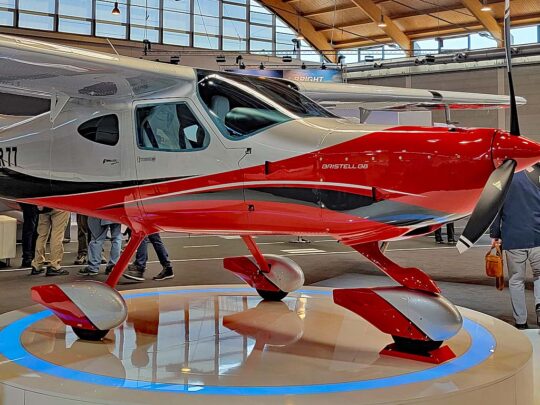 "Bristell B8 is an all-metal, high-wing [design] without struts and with a steerable nose wheel," said the company. Although it looks quite different from the low wing, B8's cockpit is equally spacious at 49.2 inches wide. Pilots and their cabin mates will no doubt find entry much easier than first climbing up on the wing. Generally, pilots identify as high or low wing enthusiasts and now BRM can offer them what they want.
While most of the aircraft is aluminum like the low wing B23 Bristell, B8's cockpit doors and the luggage compartment door are made from composite material. The landing gear appears to be the same as on the low wing B23.
The basic B8 model is powered by a 100-horsepower Rotax 912 ULS. At a later stage, BRM Aero "plans to develop options to fit the other
"Bristell B8 is an all-metal, high-wing [design] without struts and with a steerable nose wheel," said the company. Although it looks quite different from the low wing, B8's cockpit is equally spacious at 49.2 inches wide. Pilots and their cabin mates will no doubt find entry much easier than first climbing up on the wing. Generally, pilots identify as high or low wing enthusiasts and now BRM can offer them what they want.
While most of the aircraft is aluminum like the low wing B23 Bristell, B8's cockpit doors and the luggage compartment door are made from composite material. The landing gear appears to be the same as on the low wing B23.
The basic B8 model is powered by a 100-horsepower Rotax 912 ULS. At a later stage, BRM Aero "plans to develop options to fit the other 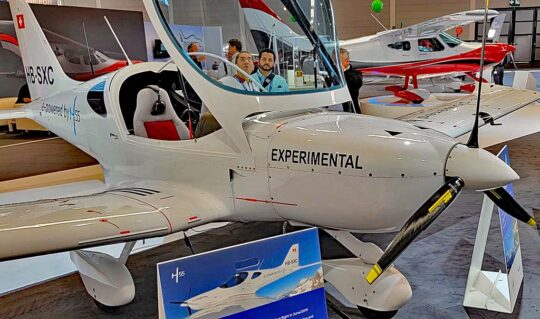 H55 is a leading enabler of electric aviation offering modular, lightweight, and certified electric propulsion and battery management solutions to the aviation industry as to make air transport, quiet, clean and affordable. "H55 supports its customers in integrating and customizing its technology solutions for a wide range of applications suitable for both existing airplane designs and future concepts such as VTOLs and e-commuter aircraft," said the Swiss company.
H55 is a leading enabler of electric aviation offering modular, lightweight, and certified electric propulsion and battery management solutions to the aviation industry as to make air transport, quiet, clean and affordable. "H55 supports its customers in integrating and customizing its technology solutions for a wide range of applications suitable for both existing airplane designs and future concepts such as VTOLs and e-commuter aircraft," said the Swiss company.
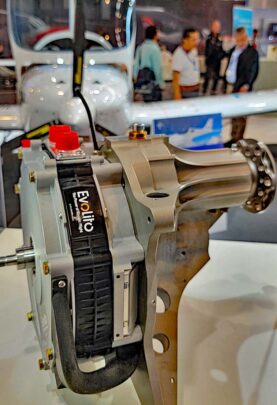 The result? An electric LSA-style aircraft with a 419-pound payload, an 1,874-pound MTOW, a climb rate of 800 feet per minute, and electric energy cost for a one-hour flight of $7.00. Charging time for normal operations is reportedly just one hour. BRM Aero expects to achieve CS23 certification by mid-2022. It should be available for flight schools as soon as mid-2022, the company said.
"With the B23 Energic, our company has become a pioneer of the next aviation revolution," said BRM Aero. That may be so, but I'll bet we see more interest in the B8 high wing or — for the best-heeled customers — the turbine Bristell.
BRM Aero, based in the Czech Republic, was established in 2009. With seven models available today, BRM Aero produces more than 100 aircraft every year. "Bristell has produced more than 670 LSA aircraft worldwide," said the company.
The result? An electric LSA-style aircraft with a 419-pound payload, an 1,874-pound MTOW, a climb rate of 800 feet per minute, and electric energy cost for a one-hour flight of $7.00. Charging time for normal operations is reportedly just one hour. BRM Aero expects to achieve CS23 certification by mid-2022. It should be available for flight schools as soon as mid-2022, the company said.
"With the B23 Energic, our company has become a pioneer of the next aviation revolution," said BRM Aero. That may be so, but I'll bet we see more interest in the B8 high wing or — for the best-heeled customers — the turbine Bristell.
BRM Aero, based in the Czech Republic, was established in 2009. With seven models available today, BRM Aero produces more than 100 aircraft every year. "Bristell has produced more than 670 LSA aircraft worldwide," said the company.
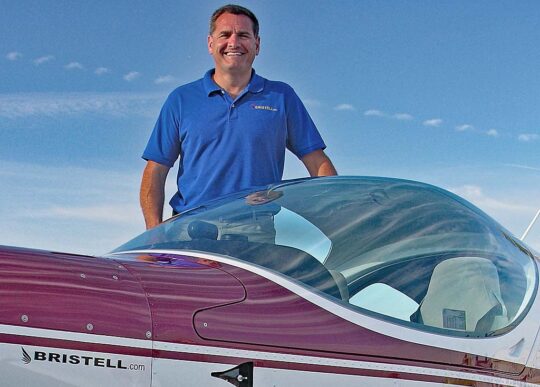 I elected not to go to what would have been my 27th visit to Aero because just two months ago, when I needed to make air reservations, Covid panic still gripped Europe. Officially in mid-February, the show could not even be held. It looked too questionable for me to go forward with costly tickets amid global uncertainty; I was unwilling to chance being quarantined for two weeks at my own expense. Challenges of obtaining the right Covid documents also proved difficult. Fortunately for the beleaguered Aero organizers, things opened up but now I'm missing one of my favorite airshows of the year. So, a big thanks to John Rathmell of
I elected not to go to what would have been my 27th visit to Aero because just two months ago, when I needed to make air reservations, Covid panic still gripped Europe. Officially in mid-February, the show could not even be held. It looked too questionable for me to go forward with costly tickets amid global uncertainty; I was unwilling to chance being quarantined for two weeks at my own expense. Challenges of obtaining the right Covid documents also proved difficult. Fortunately for the beleaguered Aero organizers, things opened up but now I'm missing one of my favorite airshows of the year. So, a big thanks to John Rathmell of 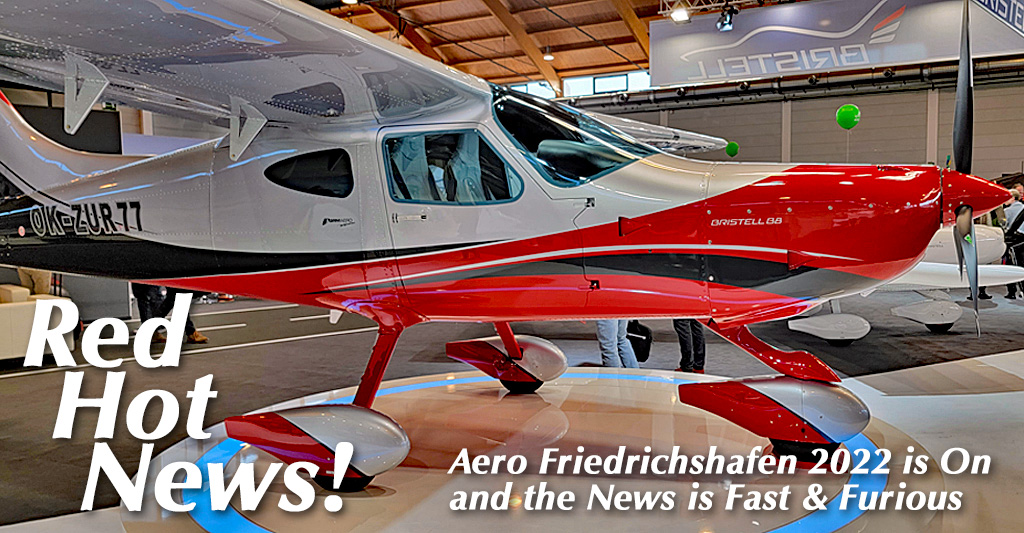
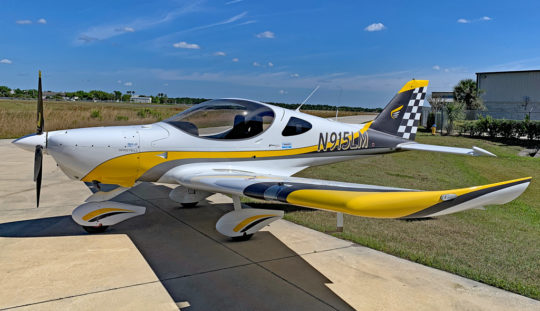 Other than the pure thrill of logging a high groundspeed, going fast is only useful when you're going somewhere. If perhaps your goal is aerial sightseeing then slow (and probably low) is the way to go. If you have to go fast, remember that old saying from auto racing: "Speed cost money; how fast do you want to go?" This equally applies to aviation.
FAA actually drew a speed line back in the early 2000s when the SP/LSA rule was being written (just as now with the LSA 2023 rule in the works). No, I don't refer to the 120-knot speed limit we'll discuss below. I refer to a slower speed, the one implied in the minimum 20 hours required for a Sport Pilot certificate.
Other than the pure thrill of logging a high groundspeed, going fast is only useful when you're going somewhere. If perhaps your goal is aerial sightseeing then slow (and probably low) is the way to go. If you have to go fast, remember that old saying from auto racing: "Speed cost money; how fast do you want to go?" This equally applies to aviation.
FAA actually drew a speed line back in the early 2000s when the SP/LSA rule was being written (just as now with the LSA 2023 rule in the works). No, I don't refer to the 120-knot speed limit we'll discuss below. I refer to a slower speed, the one implied in the minimum 20 hours required for a Sport Pilot certificate.
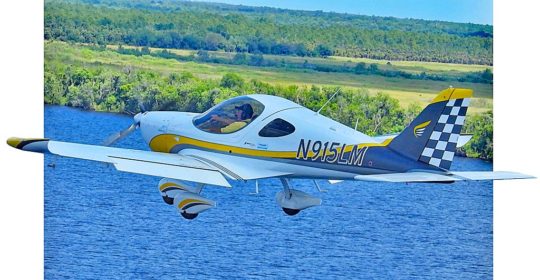 Rule writers separated Light-Sport Aircraft as sub-87 knot and faster. At the time the rule was released, this made sense. America was still flying lots of what we now loosely call "ultralights." These aircraft were simply built, half the empty weight of most LSA today, and flew slower, usually under 100 mph …87 knots.
Then LSA got glass cockpits, leather interiors, high performance engines, autopilots, and more. Prices went up accordingly and today we have a bifurcated market — just like FAA once envisioned, with simpler sub-87 knot airplanes and faster but more costly models.
Rule writers separated Light-Sport Aircraft as sub-87 knot and faster. At the time the rule was released, this made sense. America was still flying lots of what we now loosely call "ultralights." These aircraft were simply built, half the empty weight of most LSA today, and flew slower, usually under 100 mph …87 knots.
Then LSA got glass cockpits, leather interiors, high performance engines, autopilots, and more. Prices went up accordingly and today we have a bifurcated market — just like FAA once envisioned, with simpler sub-87 knot airplanes and faster but more costly models.
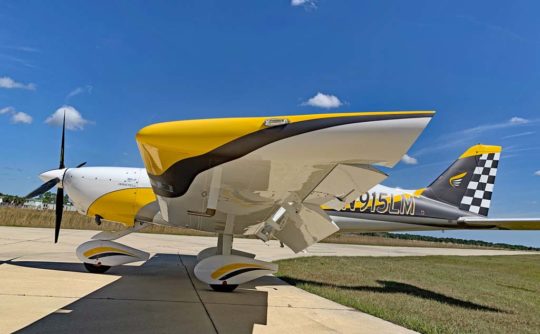 For plenty of pilots, 100 mph is fine for most of their flying including regional travel. Those who yearn for speed or want to travel interstate or cross country want the fastest machine they can afford.
The aircraft I've written about recently —
For plenty of pilots, 100 mph is fine for most of their flying including regional travel. Those who yearn for speed or want to travel interstate or cross country want the fastest machine they can afford.
The aircraft I've written about recently — 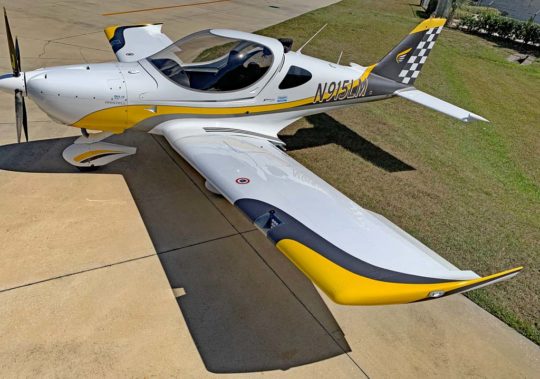 BRM Aero was early to begin work with Rotax's new
BRM Aero was early to begin work with Rotax's new 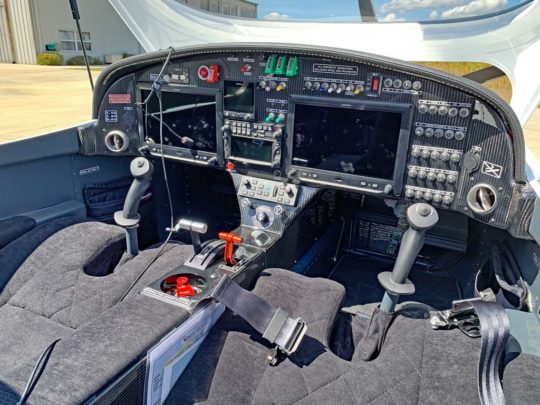 "Vne, Velocity Never Exceed, is an indicated air speed," Lou started in a reply to a Facebook audience. "For example, When the 915iS powered Bristell Speedster is flying at 12,500 feet with a true airspeed of 170 miles per hour or 147 knots, the indicated airspeed is only 118 knots. The Bristell has a 157 knots Vne." A good
"Vne, Velocity Never Exceed, is an indicated air speed," Lou started in a reply to a Facebook audience. "For example, When the 915iS powered Bristell Speedster is flying at 12,500 feet with a true airspeed of 170 miles per hour or 147 knots, the indicated airspeed is only 118 knots. The Bristell has a 157 knots Vne." A good 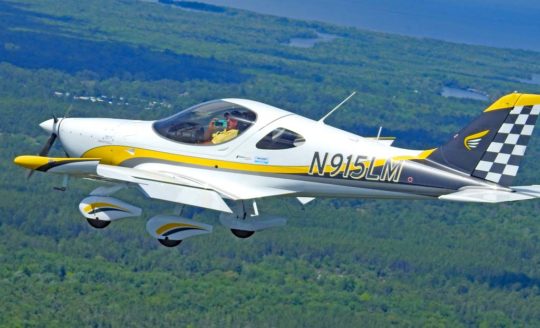
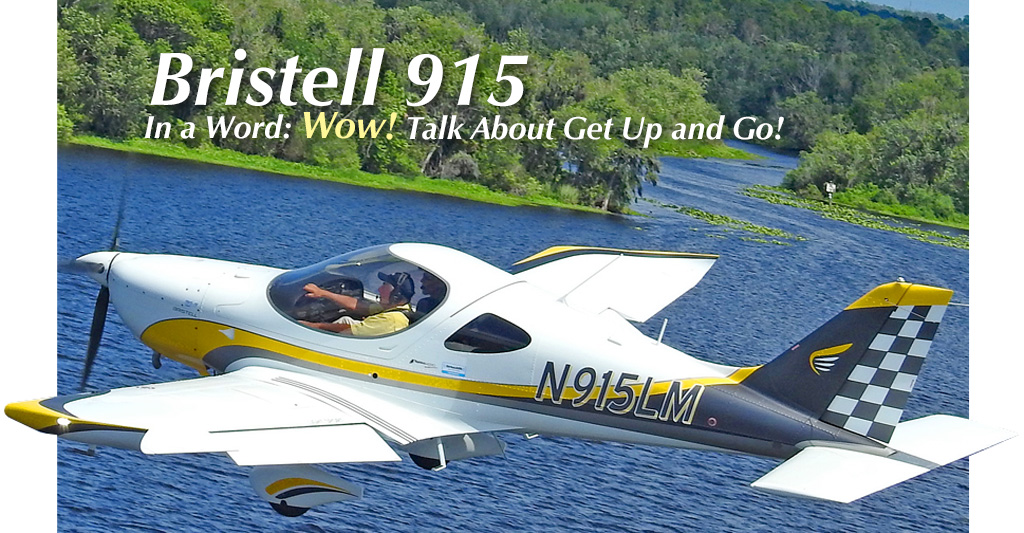
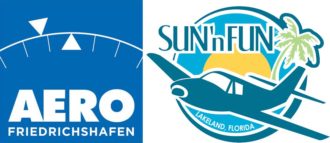 Of course, I refer to
Of course, I refer to 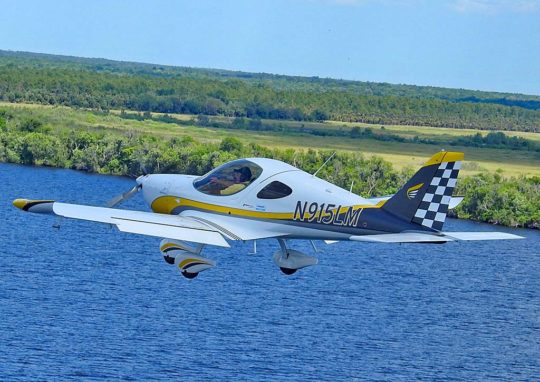 Bristell with
Bristell with 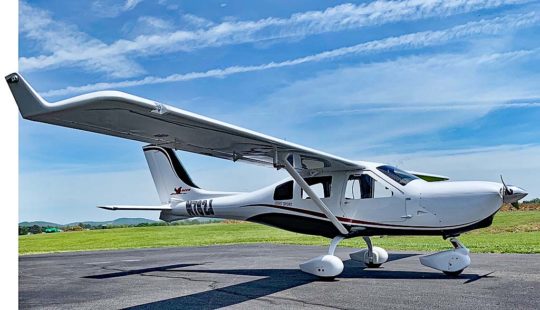 Representative U.S. Sport Planes, led by industry veteran Scott Severen, has demonstrated this baggage capacity with photos showing a
Representative U.S. Sport Planes, led by industry veteran Scott Severen, has demonstrated this baggage capacity with photos showing a 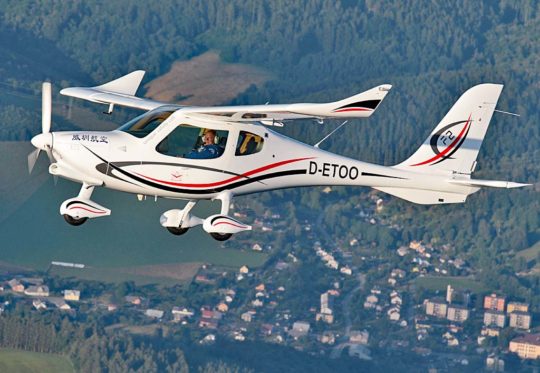 Since I first saw the F2 in mock up, Flight Design has redesigned the intake for two reasons: "to reduce drag as we confirmed the older version was very functional but draggy; and for aesthetic reasons," said the company. "Flight Design team designer and Head of Airworthiness, Christian Majunke, designed conceptually. He also designed a rather novel installation of the coolant and oil radiators," elaborated Flight Design USA representative, Tom Peghiny.
Also new panel is an SLSA panel with twin G3X screens, a Garmin GTR 225 Com, Garmin GTX 345 ADSB in and out transponder, Garmin GMC 507 autopilot control head (with dual axis autopilot), and Garmin GMA 245 intercom.
Pilot controls remain essentially as they were on the CT-series but note the combined single lever throttle and brake system.
"Our F2 prototype number 002 arrived at port in Miami in preparation for display at Sun n Fun 2020," said Tom. Like most vendors, Flight Design USA hoped to go forward with the Lakeland show but will now unveil the new model at Oshkosh 2020 (assuming it remains on schedule).
"After completing all SLSA required flight testing including the demanding ASTM 3180 anti-spin requirements, production has started on the first aircraft from production tooling in Germany, Ukraine and the Czech Republic," concluded Tom.
Since I first saw the F2 in mock up, Flight Design has redesigned the intake for two reasons: "to reduce drag as we confirmed the older version was very functional but draggy; and for aesthetic reasons," said the company. "Flight Design team designer and Head of Airworthiness, Christian Majunke, designed conceptually. He also designed a rather novel installation of the coolant and oil radiators," elaborated Flight Design USA representative, Tom Peghiny.
Also new panel is an SLSA panel with twin G3X screens, a Garmin GTR 225 Com, Garmin GTX 345 ADSB in and out transponder, Garmin GMC 507 autopilot control head (with dual axis autopilot), and Garmin GMA 245 intercom.
Pilot controls remain essentially as they were on the CT-series but note the combined single lever throttle and brake system.
"Our F2 prototype number 002 arrived at port in Miami in preparation for display at Sun n Fun 2020," said Tom. Like most vendors, Flight Design USA hoped to go forward with the Lakeland show but will now unveil the new model at Oshkosh 2020 (assuming it remains on schedule).
"After completing all SLSA required flight testing including the demanding ASTM 3180 anti-spin requirements, production has started on the first aircraft from production tooling in Germany, Ukraine and the Czech Republic," concluded Tom.
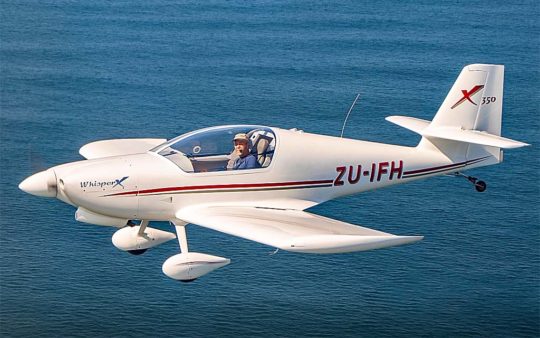 At Sun 'n Fun 2020, Deon expected to introduce Whisper to American kit builders. Alas, as with the rest of this group, you probably won't see it until July in Wisconsin.
At Sun 'n Fun 2020, Deon expected to introduce Whisper to American kit builders. Alas, as with the rest of this group, you probably won't see it until July in Wisconsin.
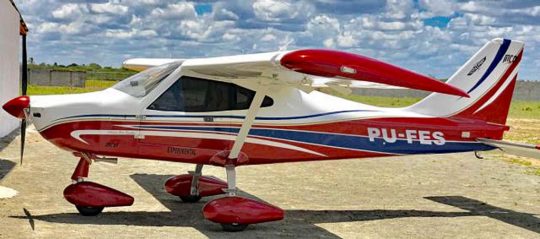 Bruno will be aided in his approach to the U.S. market by longtimer, Ed Ricks, who once helped the Paradise Aircraft people with their
Bruno will be aided in his approach to the U.S. market by longtimer, Ed Ricks, who once helped the Paradise Aircraft people with their 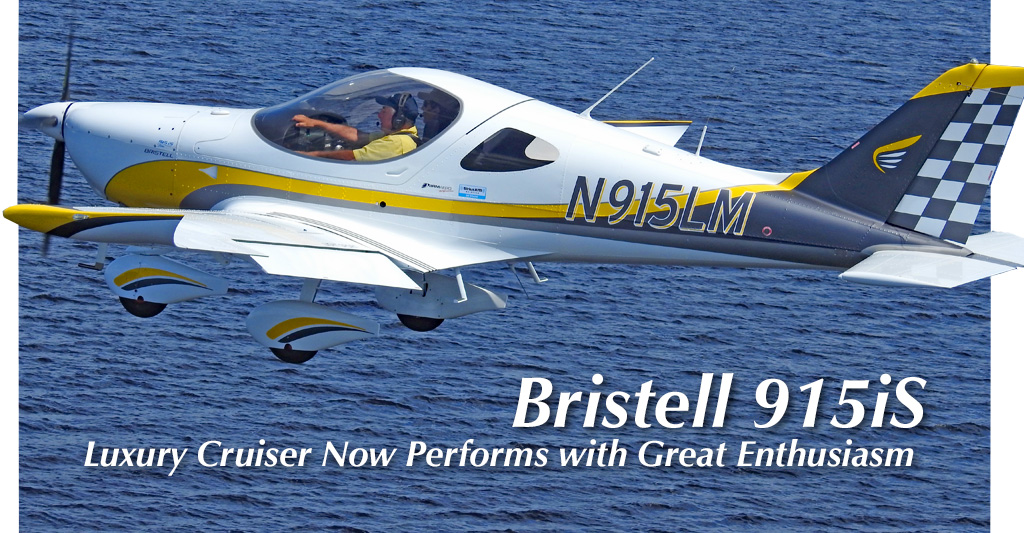
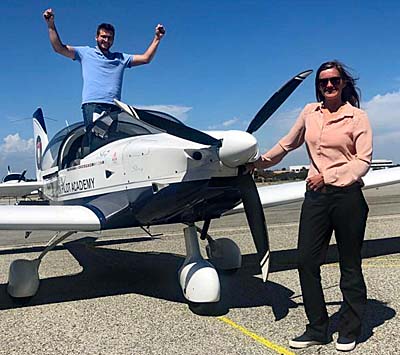

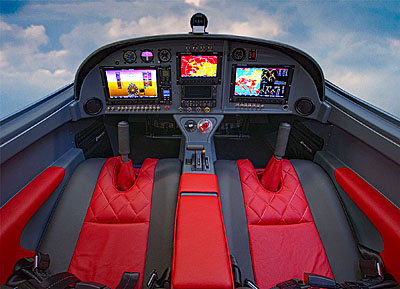
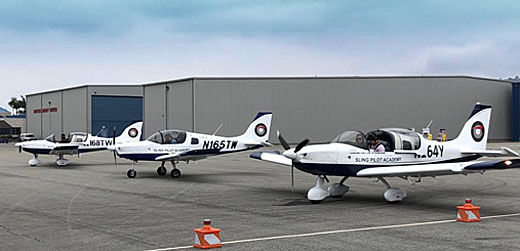 It's not just pilots either. Although it's a story worthy of another article, mechanics are predicted to have even higher job opportunities with pay scales increasing to entice trained workers. This is a great time to be a young person pursing aviation, better than I've seen in many decades of following aviation closely.
It's wonderful to see Sling Pilot Academy and Sebring Flight Academy rewriting the old rules of how a flight school should be operated. I'm exceptionally proud of both enterprises.
Current pilots can contact
It's not just pilots either. Although it's a story worthy of another article, mechanics are predicted to have even higher job opportunities with pay scales increasing to entice trained workers. This is a great time to be a young person pursing aviation, better than I've seen in many decades of following aviation closely.
It's wonderful to see Sling Pilot Academy and Sebring Flight Academy rewriting the old rules of how a flight school should be operated. I'm exceptionally proud of both enterprises.
Current pilots can contact 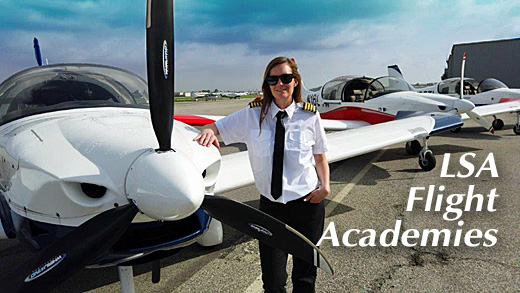
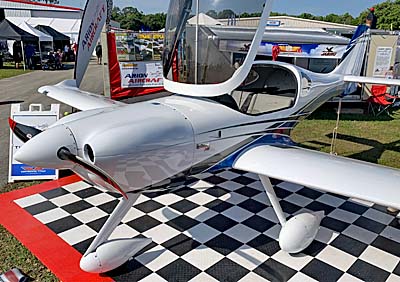
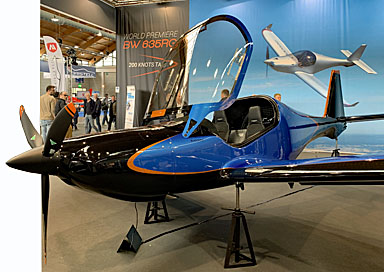
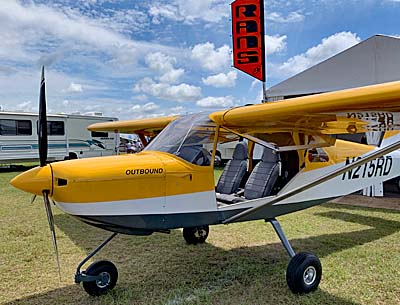
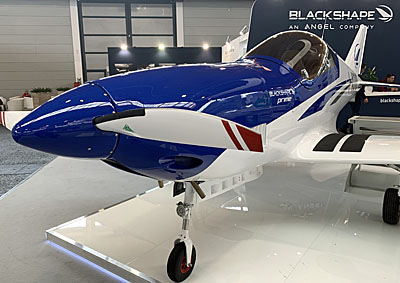
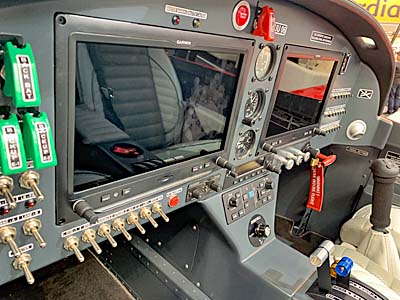
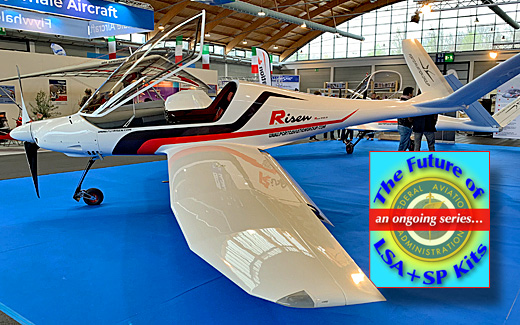
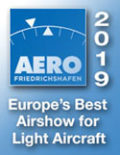 More from Aero as Day 3 closes. Because of the number on display — and because several readers asked — this post will focus on electric propulsion in two distinct forms. Whatever you think about electric as a means of lifting aircraft aloft, escaping its approach appears impossible. Experimentation is happening in all quarters. The following review is far from exhaustive; many other examples could be found at
More from Aero as Day 3 closes. Because of the number on display — and because several readers asked — this post will focus on electric propulsion in two distinct forms. Whatever you think about electric as a means of lifting aircraft aloft, escaping its approach appears impossible. Experimentation is happening in all quarters. The following review is far from exhaustive; many other examples could be found at 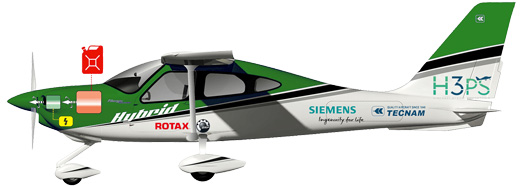 Beside taking the lead in this investigation, funded by the "European Union Horizon 2020 research and innovation programme,"
Beside taking the lead in this investigation, funded by the "European Union Horizon 2020 research and innovation programme," 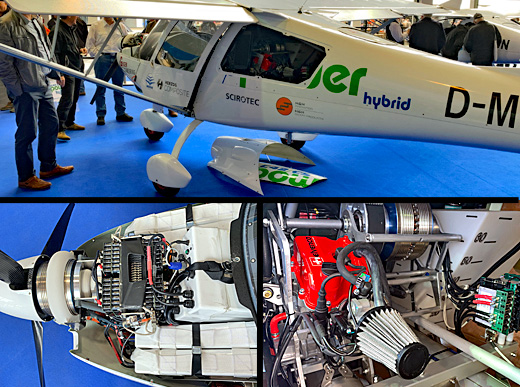 The big difference in this development compared to the H3PS project is that Toni flew the Comco Ikarus C-42 CS Elektro from his base near the factory to Aero. This hybrid is operating now. Technical information about the system was sparse on Toni's website, however, a German-language video (below) shows the aircraft operated essentially the same as its fossil fuel-powered counterparts.
When I spoke with Toni at the show. I recalled this man has has long experience with light trikes and hang glider propulsion systems based on electric power. He has gained valuable experience with these efforts and the results appear on his Comco C42C.
As an example of his state of development, the installation featured a cooling system but also a source of passenger comfort. A collar around the electric motor (white "doughnut" surrounding the motor) removes heat from the motor and channels it to the cabin. In the aft compartment, we saw a tidy installation of electric motor, generator, and a petrol fuel tank holding about 15 gallons.
The big difference in this development compared to the H3PS project is that Toni flew the Comco Ikarus C-42 CS Elektro from his base near the factory to Aero. This hybrid is operating now. Technical information about the system was sparse on Toni's website, however, a German-language video (below) shows the aircraft operated essentially the same as its fossil fuel-powered counterparts.
When I spoke with Toni at the show. I recalled this man has has long experience with light trikes and hang glider propulsion systems based on electric power. He has gained valuable experience with these efforts and the results appear on his Comco C42C.
As an example of his state of development, the installation featured a cooling system but also a source of passenger comfort. A collar around the electric motor (white "doughnut" surrounding the motor) removes heat from the motor and channels it to the cabin. In the aft compartment, we saw a tidy installation of electric motor, generator, and a petrol fuel tank holding about 15 gallons.
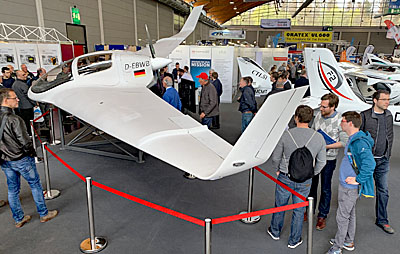 You may have already jumped to the point about those wings being exactly where the
You may have already jumped to the point about those wings being exactly where the 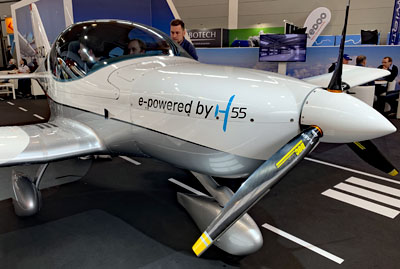 The company is now taking their smooth aircraft and powering it with an electric motor. They call the project B23 H55 Energic. The motor can deliver 90 kW (122 horsepower) for takeoff at 900 fpm and 65 kW (88 horsepower) for continuous cruise power at 125 mph. Onboard batteries can deliver one hour of endurance with a 20-minute reserve. Fully recharging will take only about 30 minutes. BRM estimates the cost of operation at $7/hour, less than the cost of one gallon of fuel at current European prices for avgas.
To repeat, this is far from a complete list of electric projects. Indeed, all of Hall A-7 at Aero Friedrichshafen was electric, with the giant Siemens company hosting a particularly large display. With multi-billion-euro companies like this involved — along with other giants of aviation and technology — it is clear that electric propulsion is on its way. How soon? What range is possible? What is the full cost …and saving? These and more questions remain to be answered but the technology is getting closer with every Aero. Look for more reporting on this at next
The company is now taking their smooth aircraft and powering it with an electric motor. They call the project B23 H55 Energic. The motor can deliver 90 kW (122 horsepower) for takeoff at 900 fpm and 65 kW (88 horsepower) for continuous cruise power at 125 mph. Onboard batteries can deliver one hour of endurance with a 20-minute reserve. Fully recharging will take only about 30 minutes. BRM estimates the cost of operation at $7/hour, less than the cost of one gallon of fuel at current European prices for avgas.
To repeat, this is far from a complete list of electric projects. Indeed, all of Hall A-7 at Aero Friedrichshafen was electric, with the giant Siemens company hosting a particularly large display. With multi-billion-euro companies like this involved — along with other giants of aviation and technology — it is clear that electric propulsion is on its way. How soon? What range is possible? What is the full cost …and saving? These and more questions remain to be answered but the technology is getting closer with every Aero. Look for more reporting on this at next 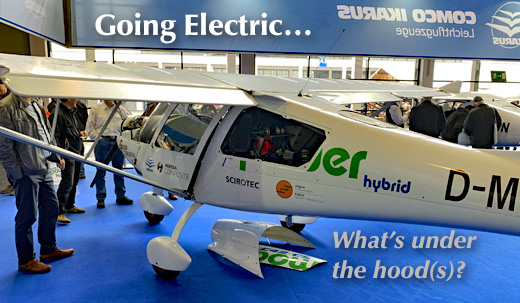
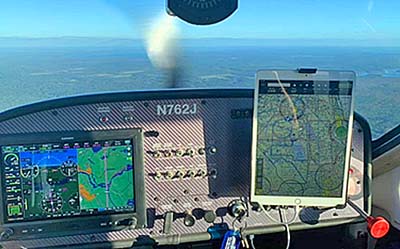
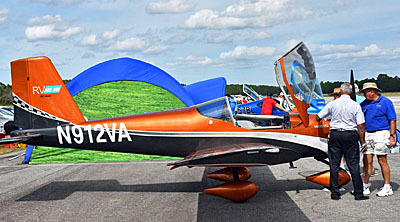
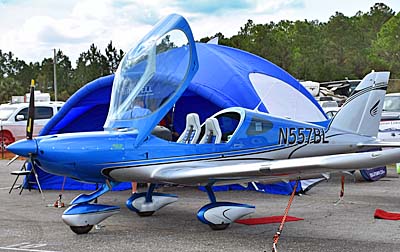
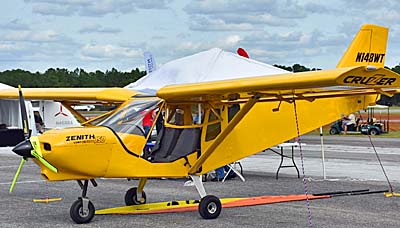
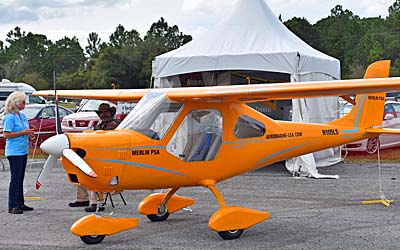
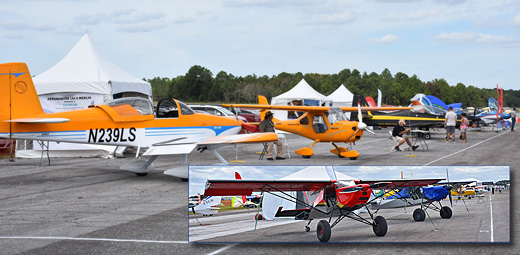
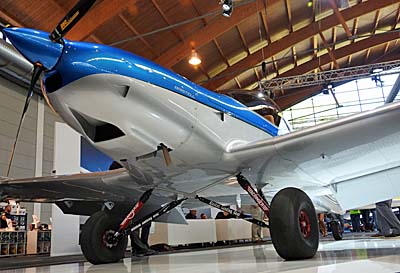 BRM Aero boss and chief design, Milan Bristela, has convincingly proven his visionary credentials. Here's
BRM Aero boss and chief design, Milan Bristela, has convincingly proven his visionary credentials. Here's 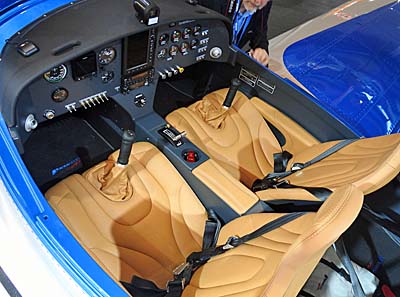 All that space might be useful for another kind of enjoyment: bush flying, landing on river beds, camping …that sort of adventure.
For the new "bush" version of TDO, BRM again did a great job of finishing the interior, both in creature comforts (as seen in the nearby photo) or equipment.
To mount big Alaska tundra tires on their TDO, BRM teamed up with
All that space might be useful for another kind of enjoyment: bush flying, landing on river beds, camping …that sort of adventure.
For the new "bush" version of TDO, BRM again did a great job of finishing the interior, both in creature comforts (as seen in the nearby photo) or equipment.
To mount big Alaska tundra tires on their TDO, BRM teamed up with 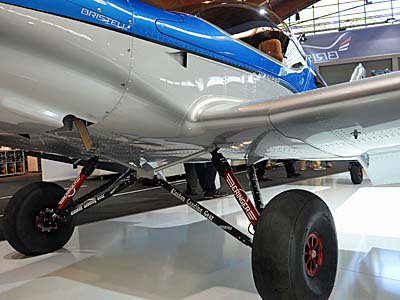 What's great about the Beringer/Alaska adaptation is that it follows Milan's mantra to keep as many new innovations as possible retrofittable to older models. That works here, too, but owners get a bonus.
Through the design of this Bush TDO model, Milan made sure a mechanically-savvy owner can switch back and forth. Use your fiberglass gear and wheel pants to go fast for travel but swap to bush mode when you want to fly for fun on the weekend, maybe at your cottage. Cool, huh? What wonderful versatility.
What's great about the Beringer/Alaska adaptation is that it follows Milan's mantra to keep as many new innovations as possible retrofittable to older models. That works here, too, but owners get a bonus.
Through the design of this Bush TDO model, Milan made sure a mechanically-savvy owner can switch back and forth. Use your fiberglass gear and wheel pants to go fast for travel but swap to bush mode when you want to fly for fun on the weekend, maybe at your cottage. Cool, huh? What wonderful versatility.
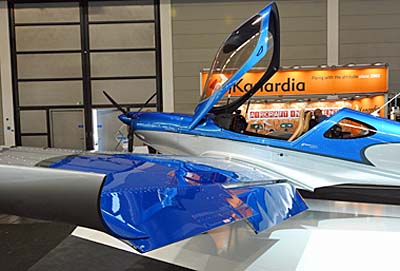 U.S. representation is very strong with
U.S. representation is very strong with 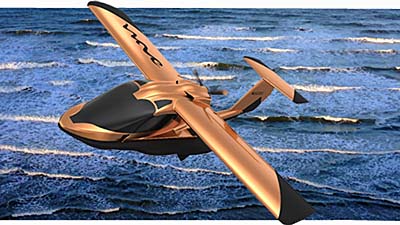
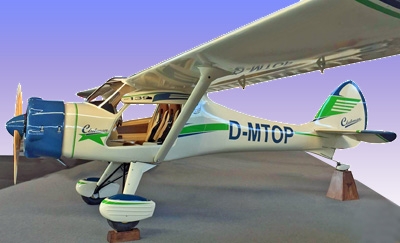
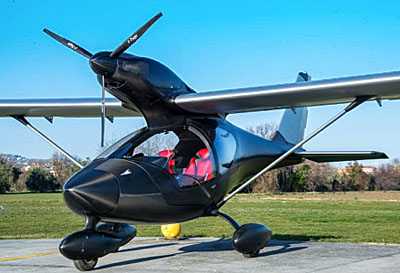
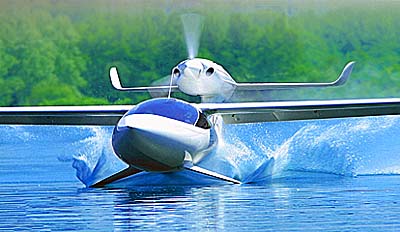
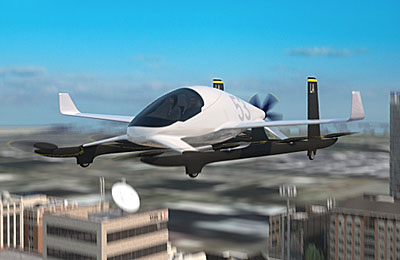 By the way, the use of technology seeks not only to save weight. New methods are used because they can, that is, developers don't need to jump through the regulatory hoops as demanded in Part 23. LSA developers can quickly implement new ideas and materials.
Boeing’s Aurora is one of a flock of new developments aimed at the air taxi trade but it could result in a sport model.
By the way, the use of technology seeks not only to save weight. New methods are used because they can, that is, developers don't need to jump through the regulatory hoops as demanded in Part 23. LSA developers can quickly implement new ideas and materials.
Boeing’s Aurora is one of a flock of new developments aimed at the air taxi trade but it could result in a sport model.
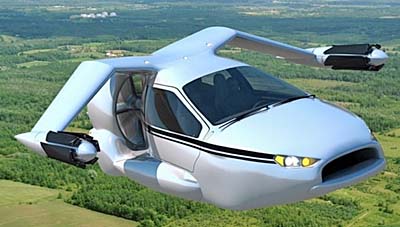
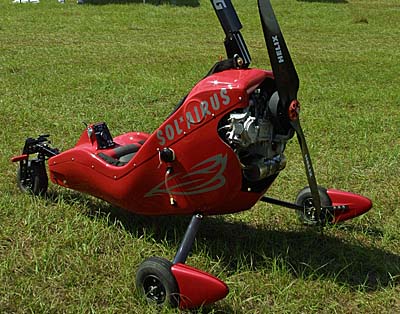
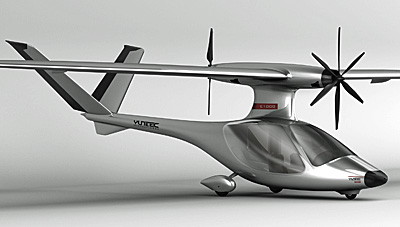
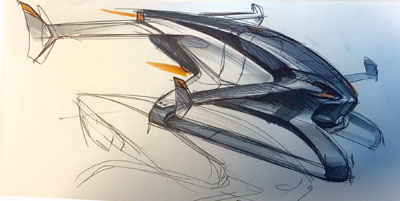
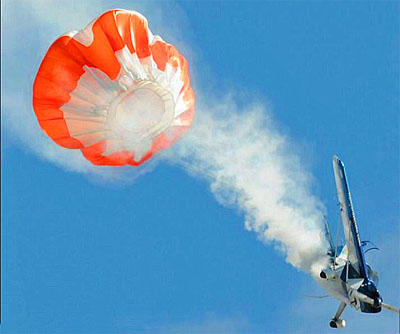
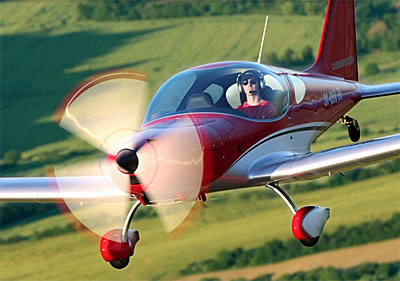
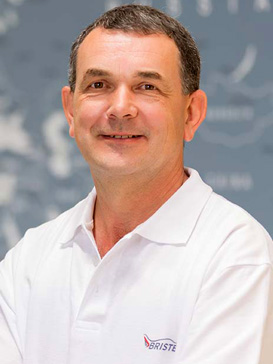 I believe you should applaud Milan Bristela. Now a veteran of the Light-Sport Aircraft sector, he has steadily built a successful aircraft manufacturing enterprise —
I believe you should applaud Milan Bristela. Now a veteran of the Light-Sport Aircraft sector, he has steadily built a successful aircraft manufacturing enterprise — 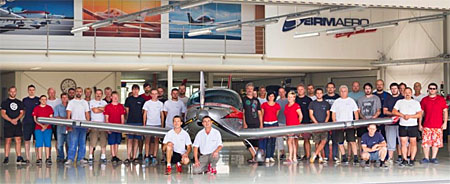 Back in 2003, when I was still involved with BRS Parachutes, I traveled to the Czech Republic. My contact was American Chip Erwin, then head of Czech Aircraft Works and now the man behind
Back in 2003, when I was still involved with BRS Parachutes, I traveled to the Czech Republic. My contact was American Chip Erwin, then head of Czech Aircraft Works and now the man behind  In the USA, Bristell now enjoys a highly experienced and dedicated team at
In the USA, Bristell now enjoys a highly experienced and dedicated team at 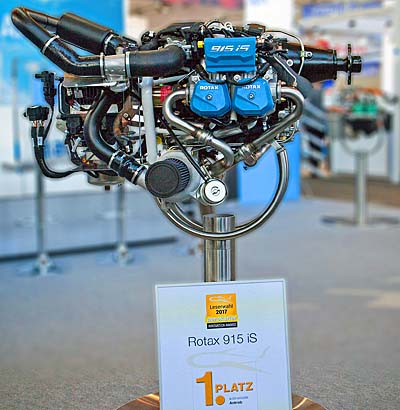 Rotax Aircraft Engines
Rotax Aircraft Engines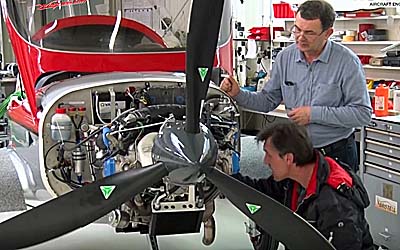
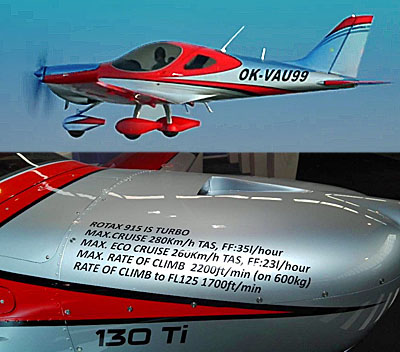 BRM has been flying a prototype aircraft with the 915 iS engine installed. Their preliminary flying shows some solid results.
BRM has been flying a prototype aircraft with the 915 iS engine installed. Their preliminary flying shows some solid results.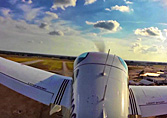
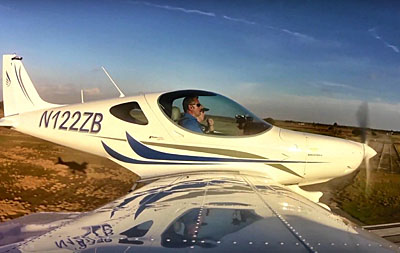 "It cannot be done," is the quick dismissal from many in aviation, referring to instrument flying in a LSA. In 2017, I venture to say everyone in aviation (worldwide) knows about Light-Sport Aircraft and the Sport Pilot certificate, but a superficial knowledge can be a bad thing. The details unveil more.
"It cannot be done," is the quick dismissal from many in aviation, referring to instrument flying in a LSA. In 2017, I venture to say everyone in aviation (worldwide) knows about Light-Sport Aircraft and the Sport Pilot certificate, but a superficial knowledge can be a bad thing. The details unveil more.
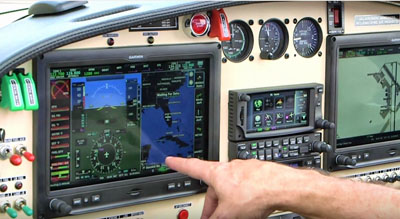 So, as some say, it cannot be done, right? Wrong.
So, as some say, it cannot be done, right? Wrong.
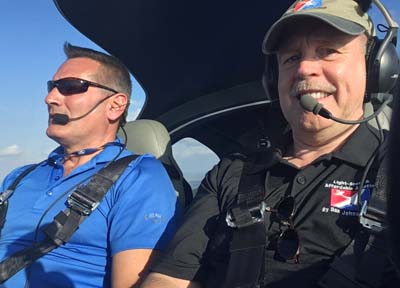 At
At 
